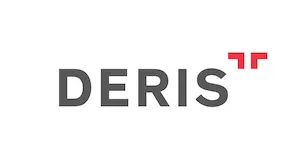The new Code of Industrial Property 6769, which repealed the previous decree-laws on patents, utility models, trademarks, designs and geographical indications, entered into force on January 10 2017 and introduced the following changes.
Requirement of use
Article 130/2 of the Code of Industrial Property introduced the application date as an alternative date for patent use. Under the code, the statutory period for using a patent is three years from the publication of the granting decision or four years from the application date, whichever is later. The use of a patent will not be discontinued without a legitimate reason for an uninterrupted three-year period.
The period for putting the patent or application to use may be much longer than three to four years, as Article 130/2 of the code provides that "use as of the date when the compulsory licence request has been made is to be evidenced". In other words, any use made after the above deadlines, but before the request for a compulsory licence, will remedy non-use until the request for a compulsory licence is made. This change increases flexibility in favour of the patentee.
As a result, it is possible under the new code to:
- offer a patent application for licence (Article 128/1); and
- request a compulsory licence for a patent application (Article 130/2).
Filing declaration and evidence of use
Under the repealed Decree-Law 551, a declaration had to be filed with the Patent and Trademark Office. Such a declaration had to state that:
- the patent could not be used for legitimate economic, legal or technical reasons; or
- the patent was put to use, in which case documentary evidence had to be filed with the Patent and Trademark Office.
With the filing of such a declaration, no compulsory licensing request could be triggered on the grounds of non-use. Under Decree-Law 551, the declaration of use or non-use filed with the Patent and Trademark Office was not published in the Official Patent Bulletin.
Alternatively, the patentee could make a formal licensing offer which would be published in the Official Patent Bulletin. This option has been maintained under the new Code of Industrial Property.
This requirement and the practice of filing a declaration and documentary evidence of use or non-use with the Patent and Trademark Office was discontinued under the new Code of Industrial Property. The filing of such a declaration is now optional.
However, in contrast with earlier legislation and practice, Article 117/8 of the Implementing Regulation (in force since April 24 2017) provides that if a rights holder chooses to file such a declaration with the Patent and Trademark Office regarding use or non-use "preferably for legitimate reasons", said declaration will be published in the Official Patent Bulletin.
Where the declaration is filed for non-use, it would be preferable to file for legitimate reasons making sure that, when needed, the evidence for such legitimate reasons can be provided to the court or the Competition Board.
It is unclear whether such a declaration will be a particular form or a box to be ticked on an electronic form, or both. The Patent and Trademark Office's practice has yet to be determined. Similarly, for those patents or applications that have gone through the statutory time limit of use and for which no declaration has been filed with the Patent and Trademark Office, the regulation provides that they will be published in the Official Patent Bulletin.
Grounds for requesting compulsory licensing extended
Under the new Code of Industrial Property, the sole penalty for non-use is a compulsory licence, as patent cancellation is not possible on the grounds of non-use.
The new Code of Industrial Property extends the grounds for requesting compulsory licences by introducing three new grounds.
Article 129 of the Code of Industrial Property cites the following grounds for which compulsory licences may be requested and granted:
- the fact that the patent has not been put to use (Article 117 of the Implementing Regulation mentions that "market conditions" and "the circumstances/conditions beyond the patentee's control and will" will be considered when assessing non-use);
- the existence of dependent patents indicated in Article 131;
- the public interest described in Article 132;
- the exportation of pharmaceutical products for addressing public health needs in other countries (this ground was introduced on the basis of the protocol amending the Agreement on Trade-Related Aspects of Intellectual Property Rights Agreement) (new ground);
- the fact that a plant breeder cannot develop a new plant variety without infringing an existing patent or the fact that a patentee cannot make use of its patent without infringing an existing plant breeder's rights (in which case Law 5042 on Plant Varieties will be applied) (new ground); and
- acts of the patentee that result in a restriction, distortion or breach of competition rules (new ground).
The new Code of Industrial Property also introduces a new body, the Competition Board, for granting 'compulsory licences' (Article 129/2). Under the new Code of Industrial Property the request for a compulsory licence is heard and decided by the courts or by the Competition Board when the ground is the restriction, distortion or breach of competition rules. However, third parties should first request from the patentee or applicant a licence under fair commercial conditions before submitting their request to the court. The courts will request from the patentee or applicant the submission of documents proving use. This is where providing evidence of "legitimate reasons" for not using the patent or application may be needed.
A significant change to earlier practice is the publication in the Official Patent Bulletin of declarations filed with the Patent and Trademark Office as well as the cases for which no declaration of use was filed. It is advisable to file such a declaration with the office, as it can be of help not only within the context of a compulsory licence request, but also within the context of a court action directed against the patent or application.
Originally published by International Law Office, June 19 2017.
The content of this article is intended to provide a general guide to the subject matter. Specialist advice should be sought about your specific circumstances.

